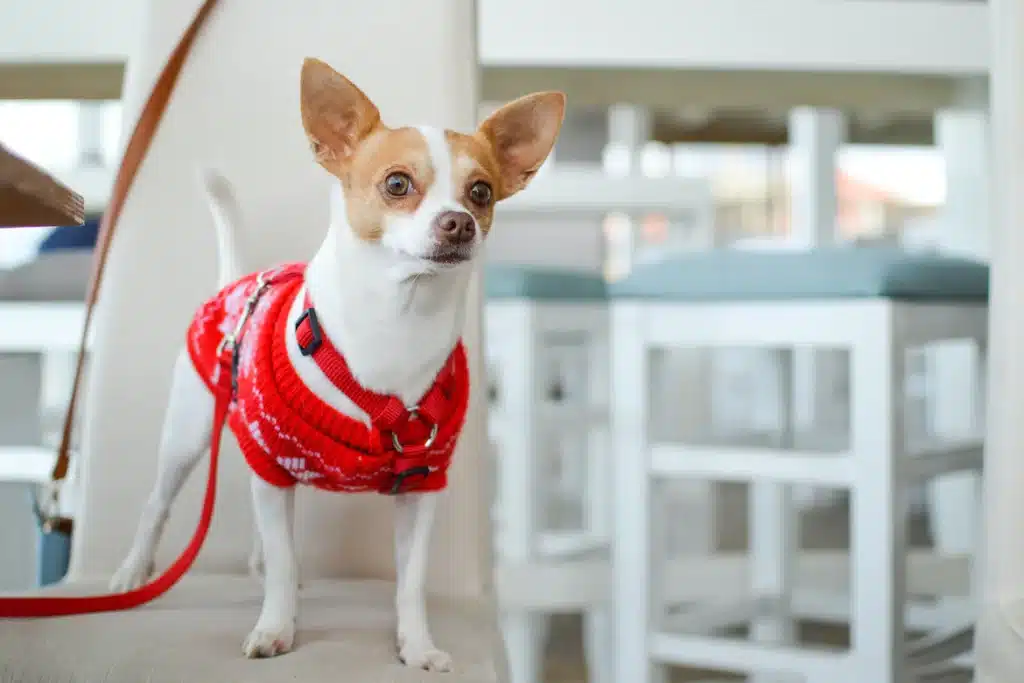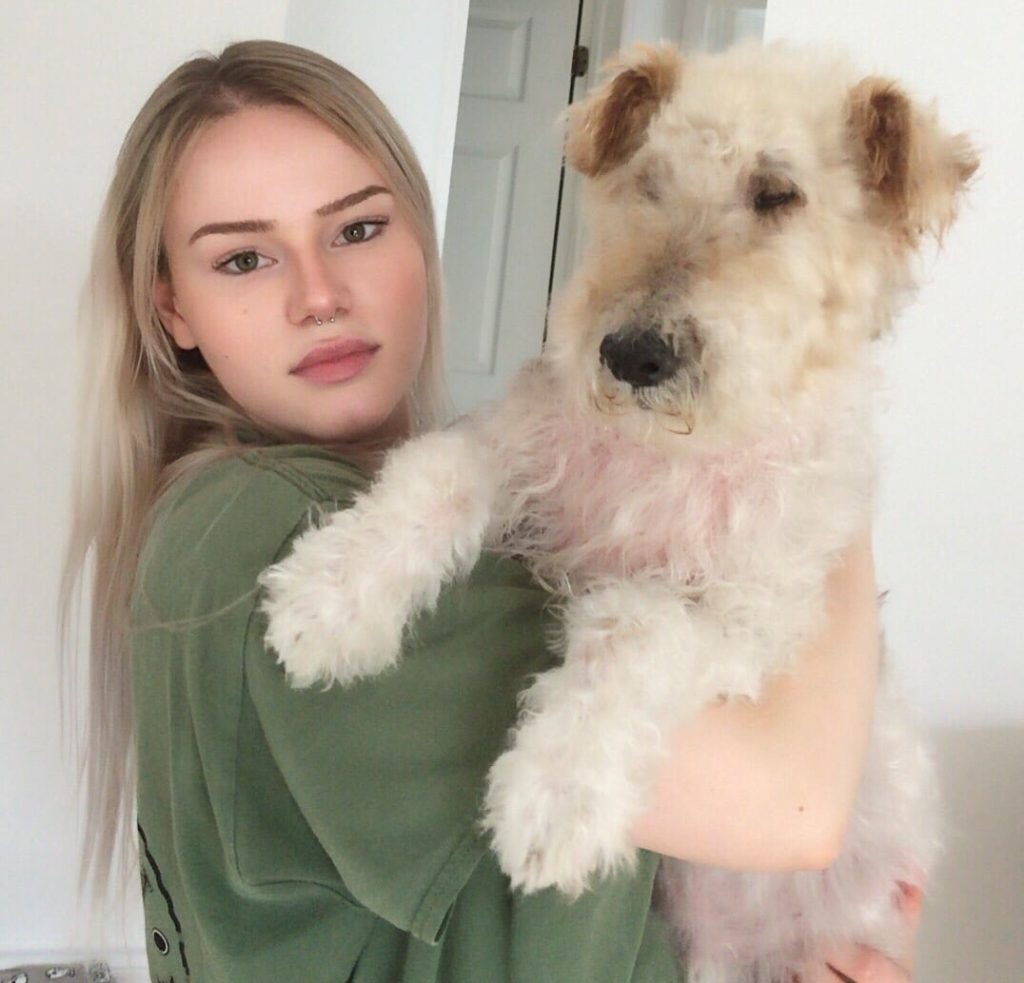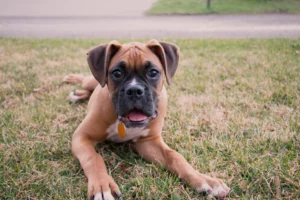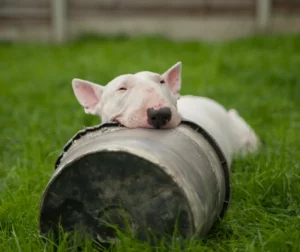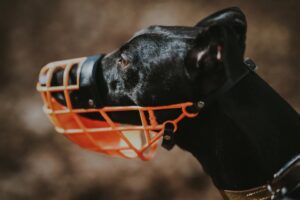Are you the proud owner of a small dog? If so, you’re likely aware of the unique joys and challenges that come with caring for a tiny furry companion. Small dogs may have small bodies, but they have big personalities and require just as much attention and care as their larger counterparts. One of the most crucial aspects of caring for a small dog is providing them with the appropriate exercise they need to stay healthy, happy, and well-behaved.
In this article, we’ll explore the benefits of exercising your small dog, the risks of not doing so, and the different types of exercise you can incorporate into your furry friend’s routine. Whether you’re a seasoned small dog owner or considering bringing a new furry friend into your life, read on to discover the importance of exercise for small dogs and how it can enhance both their lives and yours.
The Benefits of Exercising Small Dog Breeds
Small dogs need regular exercise to maintain their physical and mental health. Exercise can help them maintain a healthy weight, build strength and endurance, and improve their cardiovascular health.
When a dog exercises, endorphins are released into their bloodstream, which can help to reduce stress, anxiety, and depression. This can lead to an overall improvement in the dog’s mood and behavior, making them happier and more content. Endorphins are natural chemicals produced by the body that can act as painkillers and mood boosters. Additionally, the release of endorphins can help to reinforce positive associations with exercise, making your dog more eager and willing to engage in physical activity in the future.
However, it’s not just about physical health. Exercise also provides an excellent opportunity for bonding and socialization, strengthening the relationship between owners and their furry companions.
Here are the benefits of exercising dogs regularly:
- Physical health
- Mental health
- Weight management
- Cardiovascular health
- Stronger muscles and bones
- Improved mobility and flexibility
- Reduced risk of diseases and health issues
- Better sleep
- Improved behavior and training
- Bonding and socialization with owners and other dogs
- Release of endorphins
- Reduced stress and anxiety
- Enhanced overall well-being.
Problems Related to a Lack of Exercise
Small dogs are often seen as cute, cuddly companions that are perfectly content to spend their days lounging on the couch. However, a lack of exercise can have severe consequences for their health and well-being. As a passionate advocate for the health and happiness of small dogs, I believe it’s essential to understand the risks of a sedentary lifestyle and the importance of regular exercise.
Physical problems
Small dogs that don’t get enough exercise are at risk of becoming overweight or obese. This excess weight can put a strain on their joints and increase their risk of joint problems and arthritis. It can also lead to a range of other health issues, such as diabetes, heart disease, and respiratory problems. These health issues can cause pain and discomfort for the dog, leading to a decrease in their quality of life, and can even lead to undesirable behaviors.
Mental problems
A lack of exercise in dogs can lead to a range of mental problems, including anxiety, depression, and aggression. Without sufficient physical activity, dogs may become bored, frustrated, and restless, which can result in destructive behaviors such as chewing, digging, and excessive barking.
They may also develop anxiety and become nervous or fearful in unfamiliar situations. Additionally, a lack of exercise can contribute to depression, leading to a loss of appetite, lethargy, and a decrease in overall energy levels. This can cause stress and anxiety for both the dog and their human family, leading to a breakdown in the human-animal bond.
Types of Exercise for Small Dogs
Every dog requires physical and mental exercise to maintain their health and happiness, but it’s important to understand that exercise needs vary depending on the breed and age of the dog. Small dogs have different exercise requirements depending on the breed, and it’s important to choose the right type of exercise to ensure their overall well-being.
Physical Exercises
Small dogs, like any other dogs, require physical exercise to maintain their health and well-being. Depending on their breed and age, small dogs may have different physical exercise requirements. Some small dog breeds, such as the Chihuahua or the Maltese, have low exercise requirements and may only need short walks or indoor play sessions. Other small dog breeds, such as the Jack Russell Terrier or the Shih Tzu, are more active and require more vigorous exercise, such as running or playing fetch.
Some physical exercises for small dogs include:
– Walking or jogging
A simple yet effective way to exercise your small dog is by taking them on daily walks or jogs around your neighborhood or local park.
– Hiking
For more adventurous small dogs, hiking can be a great way to get exercise and explore the great outdoors.
– Playing fetch
This classic game is a fun way to keep your small dog entertained while also getting in some exercise.
– Tug of war
A game of tug of war can be a great way to engage your small dog’s muscles and energy while also strengthening the bond between you and your furry friend.
– Swimming
If your small dog enjoys the water, swimming is a low-impact exercise that can help them burn off energy and stay cool on hot days.
– Agility training
This fun and challenging exercise involves setting up an obstacle course for your small dog to navigate, helping to improve their agility, balance, and coordination.
– Dog yoga or “doga”
This exercise involves performing yoga poses alongside your small dog, helping to promote relaxation, flexibility, and bonding.
– Interactive puzzle toys
These toys challenge your small dog mentally and physically, helping to keep their brain stimulated and engaged.
– Obedience training
Training your small dog in obedience can be a great way to bond with them while also providing mental stimulation.
– Playing with other dogs
Playing with other dogs can help improve your small dog’s confidence and reduce anxiety, while also providing them with a fun and engaging form of exercise.
Mental Exercises
It’s important to stimulate your dog’s brain because it helps keep them mentally healthy, which in turn can help prevent boredom and behavioral problems. Just like humans, dogs need to exercise their minds as well as their bodies in order to stay healthy and happy. Mental stimulation can come in the form of learning new commands, solving puzzles, or engaging in interactive play with their owner or other dogs. By providing mental stimulation for your dog, you can help improve their overall quality of lifeInteractive Puzzle toys
Here are some examples of toys that will stimulate your dog’s brain:
Learning New Tricks
Learning new tricks is also a great way to stimulate your dog’s brain and body. Training is crucial for small dog breeds to help them develop good behavior and socialization skills. Small dogs tend to have a tendency to resource guard their owners, which means they may become overly protective and aggressive when other people or dogs approach them.
Training can help small dogs learn appropriate behavior and reduce their tendency to resource guard their owners. Through obedience training and socialization, small dogs can learn how to interact appropriately with other dogs and people, and develop good manners and behavior.
Furthermore, training can help small dogs build confidence, reduce anxiety and improve their cognitive abilities. Many small dogs suffer from anxiety, which can lead to destructive behavior and other negative behaviors. Training can help small dogs feel more comfortable and confident in new situations, reducing their anxiety levels and promoting positive behavior.
For further insight into the significance of acquiring basic commands, take a look at our article: “6 Commands Your Dog Should Know“.
Different Breeds, Different Exercise Requirements
As mentioned earlier, different small dog breeds have different exercise requirements. Some breeds, such as the Pekingese or the Cavalier King Charles Spaniel, are known for their low energy levels and do not require a lot of exercise. Other breeds, such as the Boston Terrier or the Miniature Schnauzer, are more active and require more exercise. It is essential to research the exercise requirements of a dog’s breed before adopting them to ensure that their exercise needs can be met.
The Importance of Age
Age is also an important consideration when choosing a type of exercise for small dogs. Younger dogs generally require more exercise than older dogs. Puppies should not engage in high-impact exercises, such as running or jumping, until their bones and joints are fully developed. Older dogs may also have different exercise requirements due to age-related health issues such as arthritis.
To learn more about exercising older dogs, check out our article: “Exercise Guide for Senior Dogs“.
Trying New Activities
Finally, it is important to try new activities with small dogs to provide them with a range of physical and mental stimulation. Incorporating new activities into your dog’s routine can provide enrichment, resulting in numerous long-term benefits for your furry friend.
By introducing your small dog to different forms of exercise, you can help them discover new interests and talents while keeping them engaged and entertained. When choosing a new activity, remember to start slowly and progress gradually to avoid injury and ensure your dog enjoys the activity. So, if you’re looking to spice up your small dog’s exercise routine, don’t be afraid to step outside of the box and try something new – you and your furry friend might just discover a new favorite activity together!
The Power of Exercise For Small Dogs
As a small dog owner, you have the power to enhance your furry friend’s quality of life by providing them with the exercise they need. Whether it’s a walk around the block, a game of fetch, or a new activity like agility training or dog yoga, there are numerous ways to get your small dog moving and engaged.
By making exercise a priority, you can help your furry friend maintain a healthy weight, promote good physical and mental health, and strengthen your bond through shared experiences. So, what are you waiting for? Grab your leash and head outside with your small dog – you won’t regret it!

